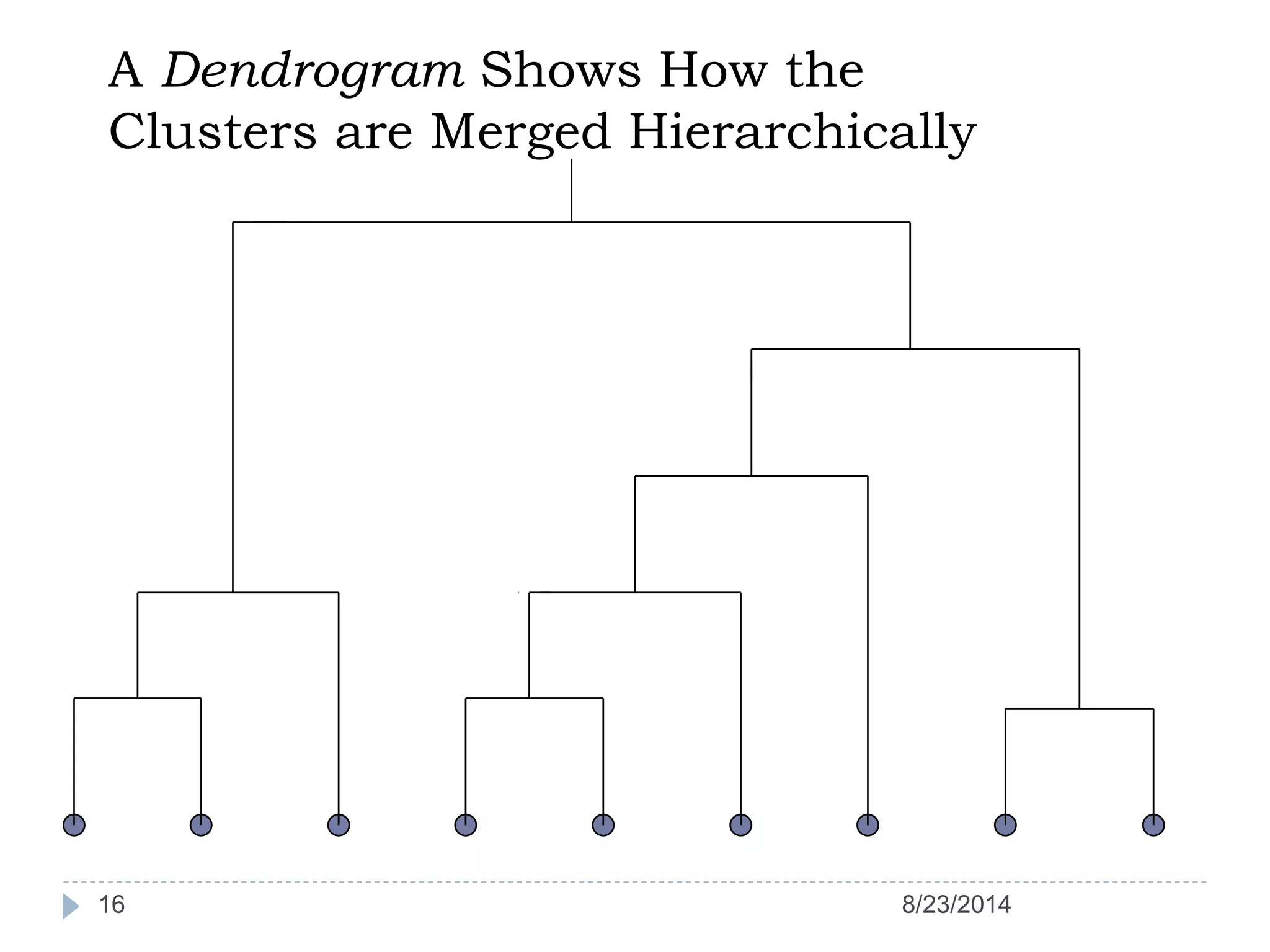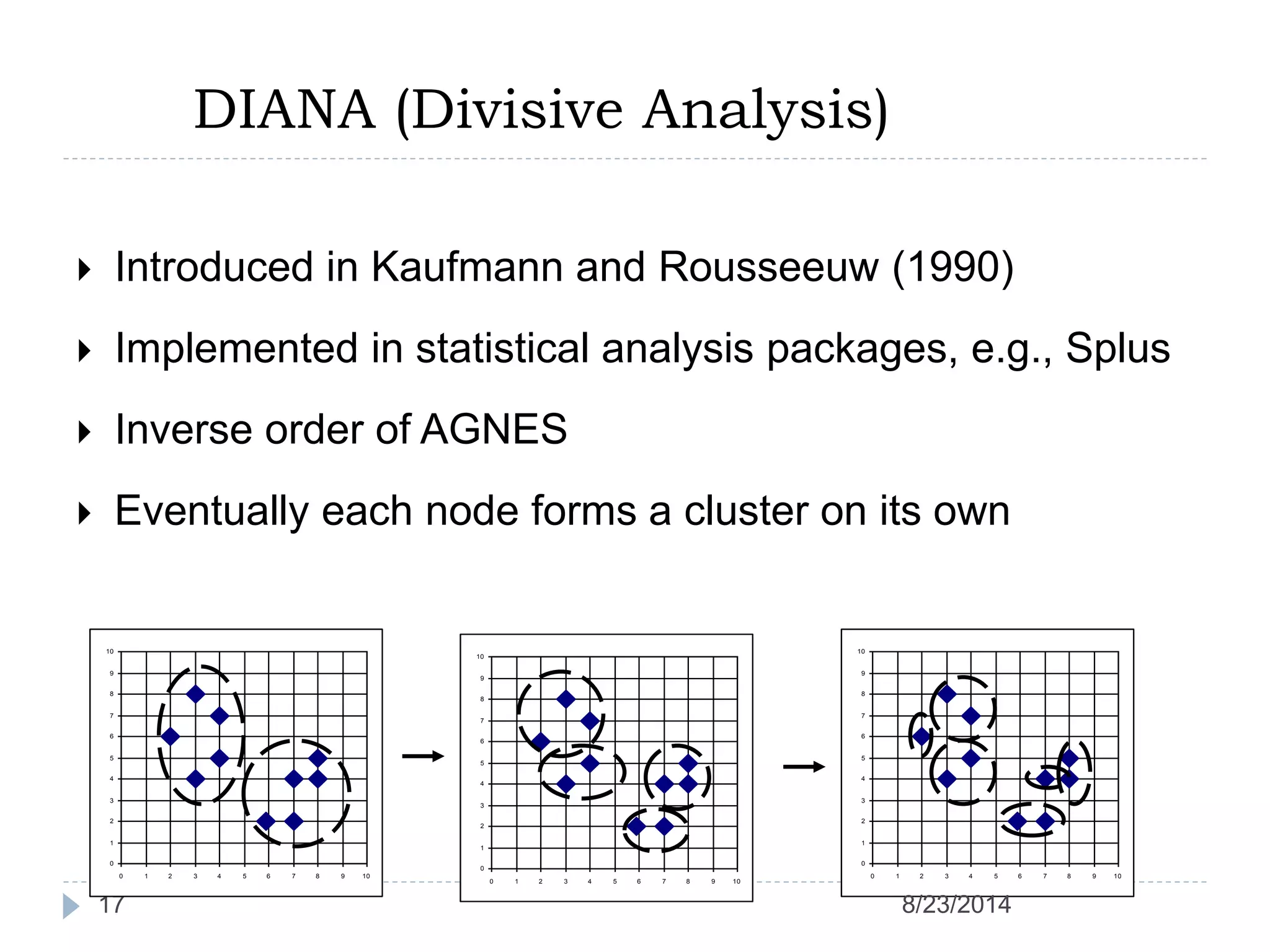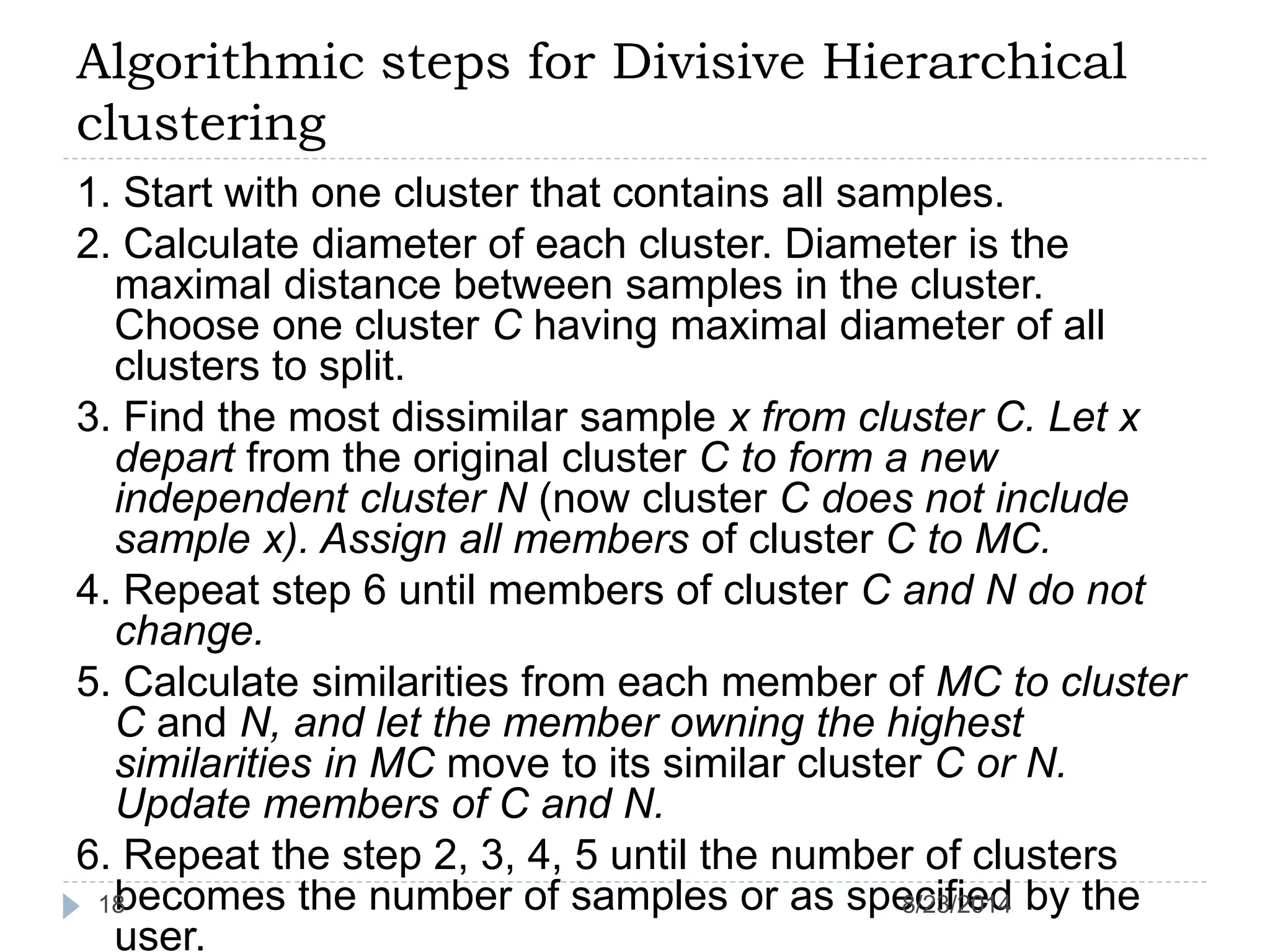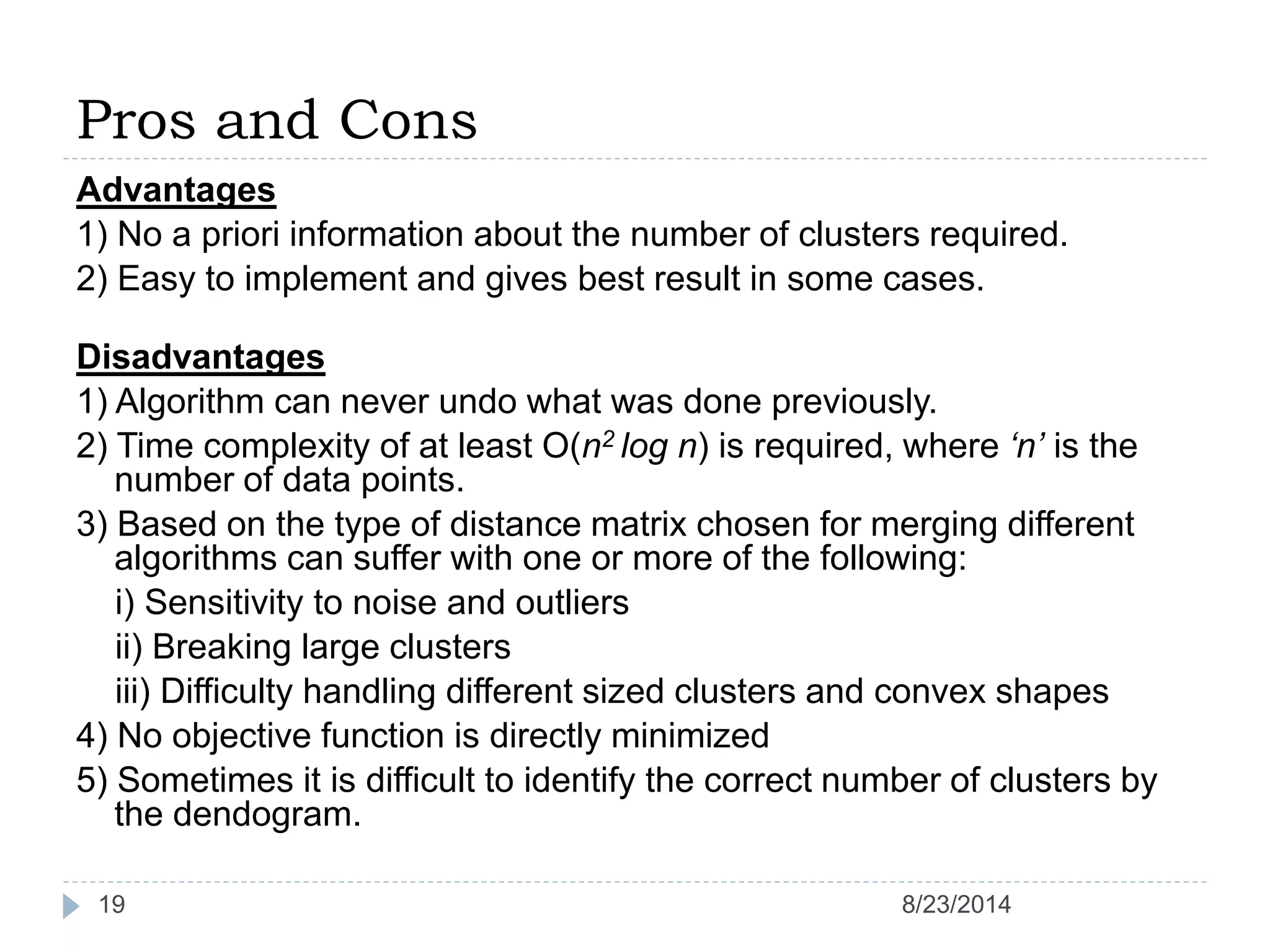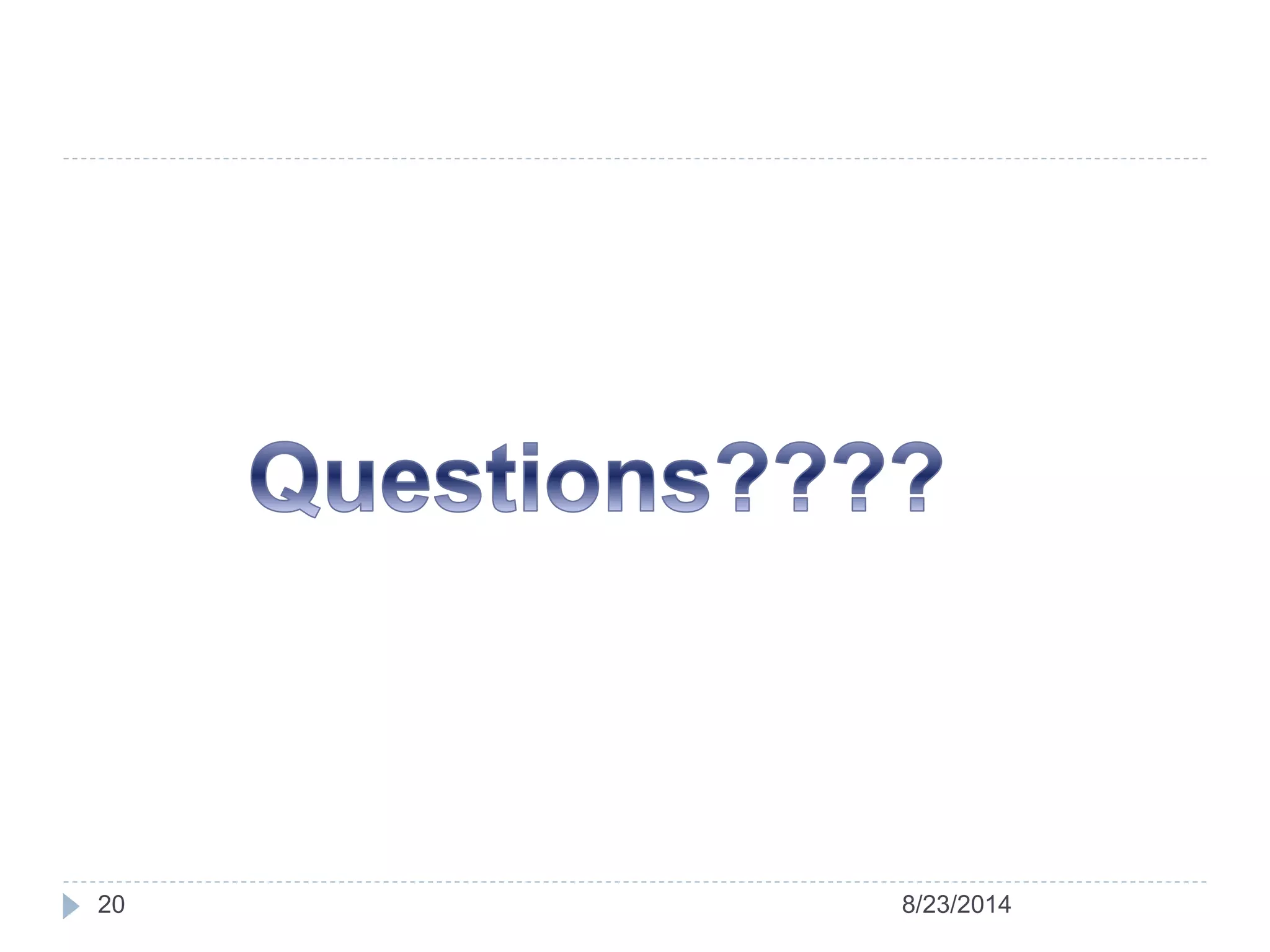Hierarchical clustering is a method of partitioning a set of data into meaningful sub-classes or clusters. It involves two approaches - agglomerative, which successively links pairs of items or clusters, and divisive, which starts with the whole set as a cluster and divides it into smaller partitions. Agglomerative Nesting (AGNES) is an agglomerative technique that merges clusters with the least dissimilarity at each step, eventually combining all clusters. Divisive Analysis (DIANA) is the inverse, starting with all data in one cluster and splitting it until each data point is its own cluster. Both approaches can be visualized using dendrograms to show the hierarchical merging or splitting of clusters.
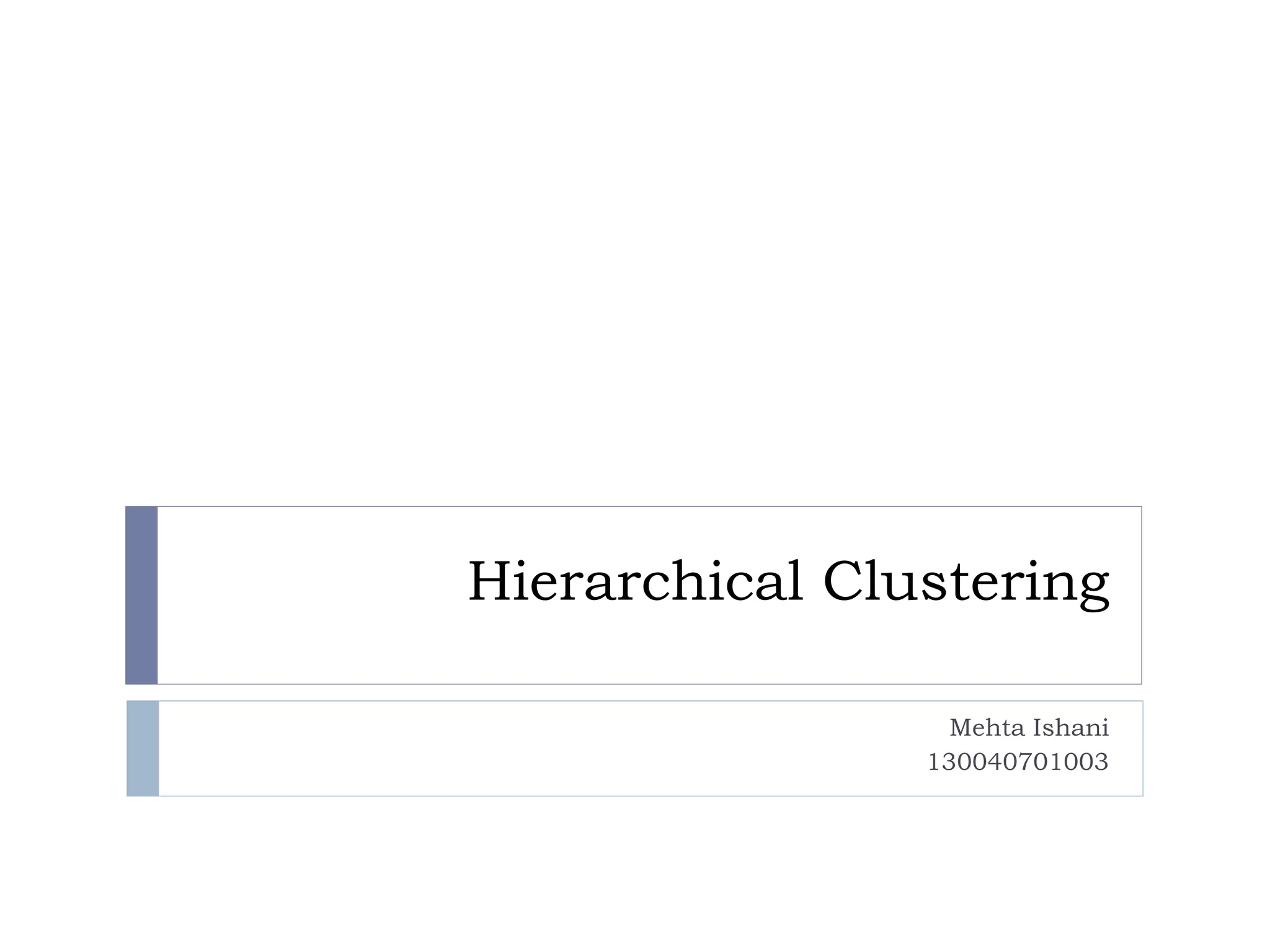
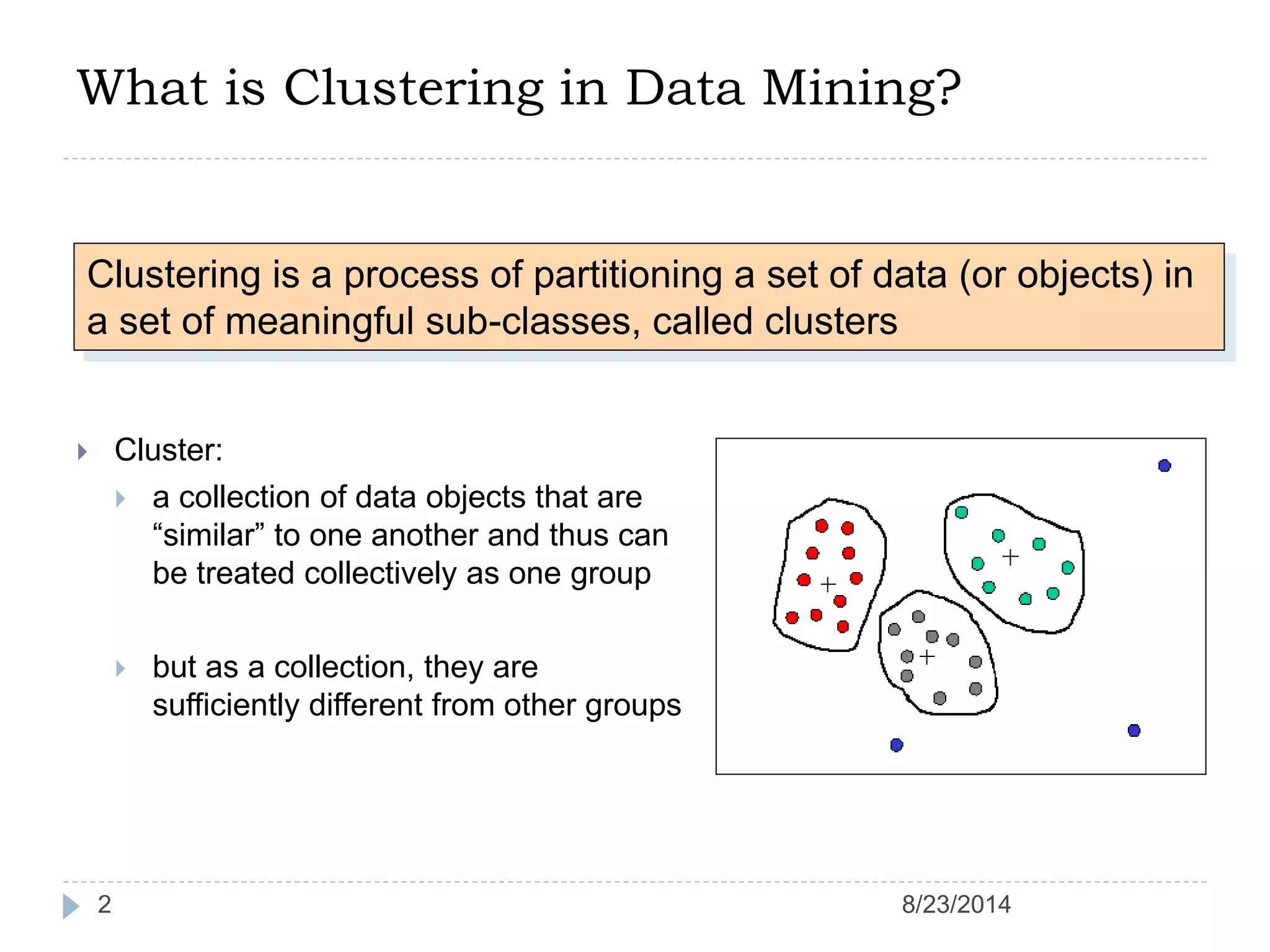
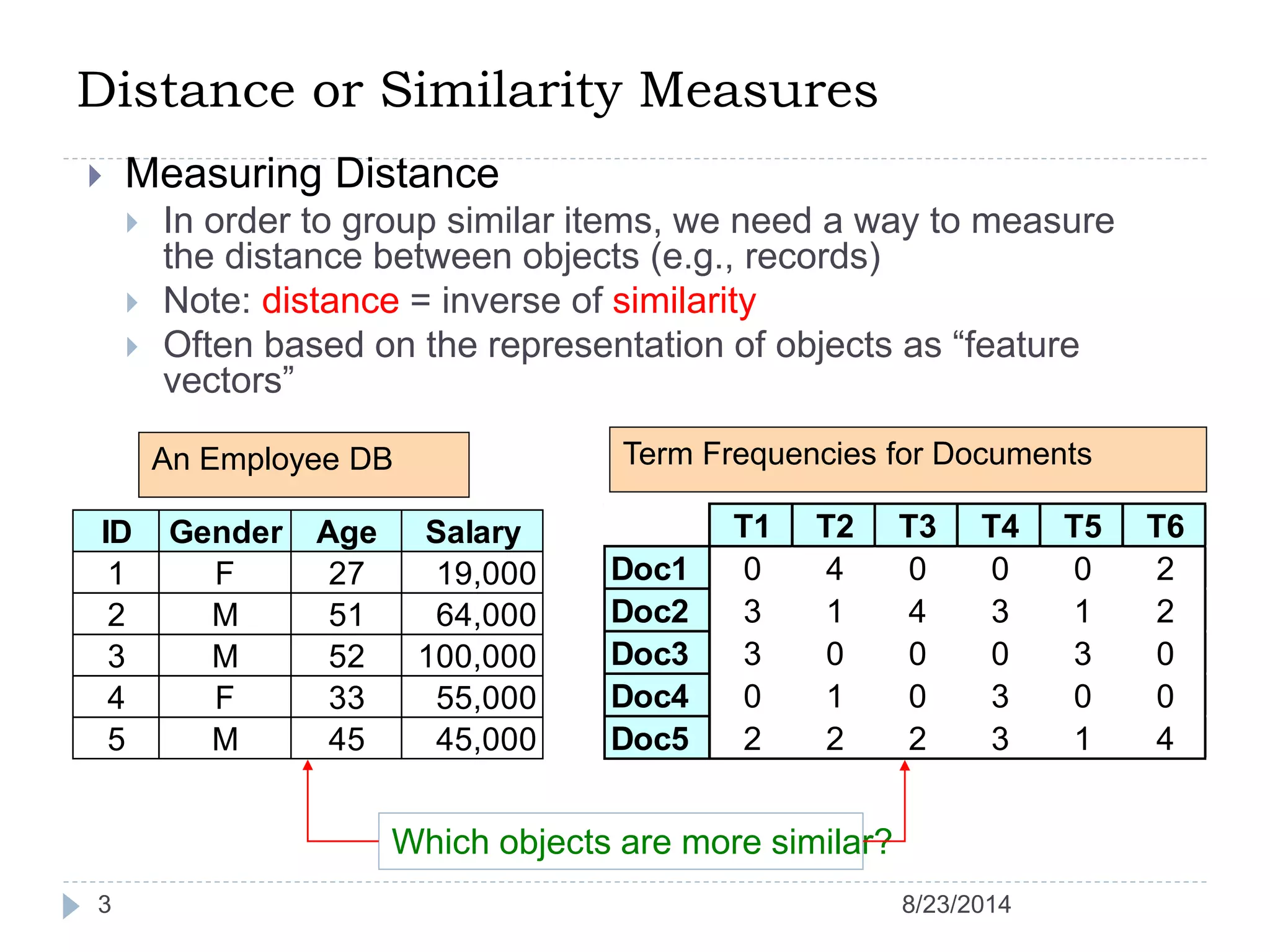
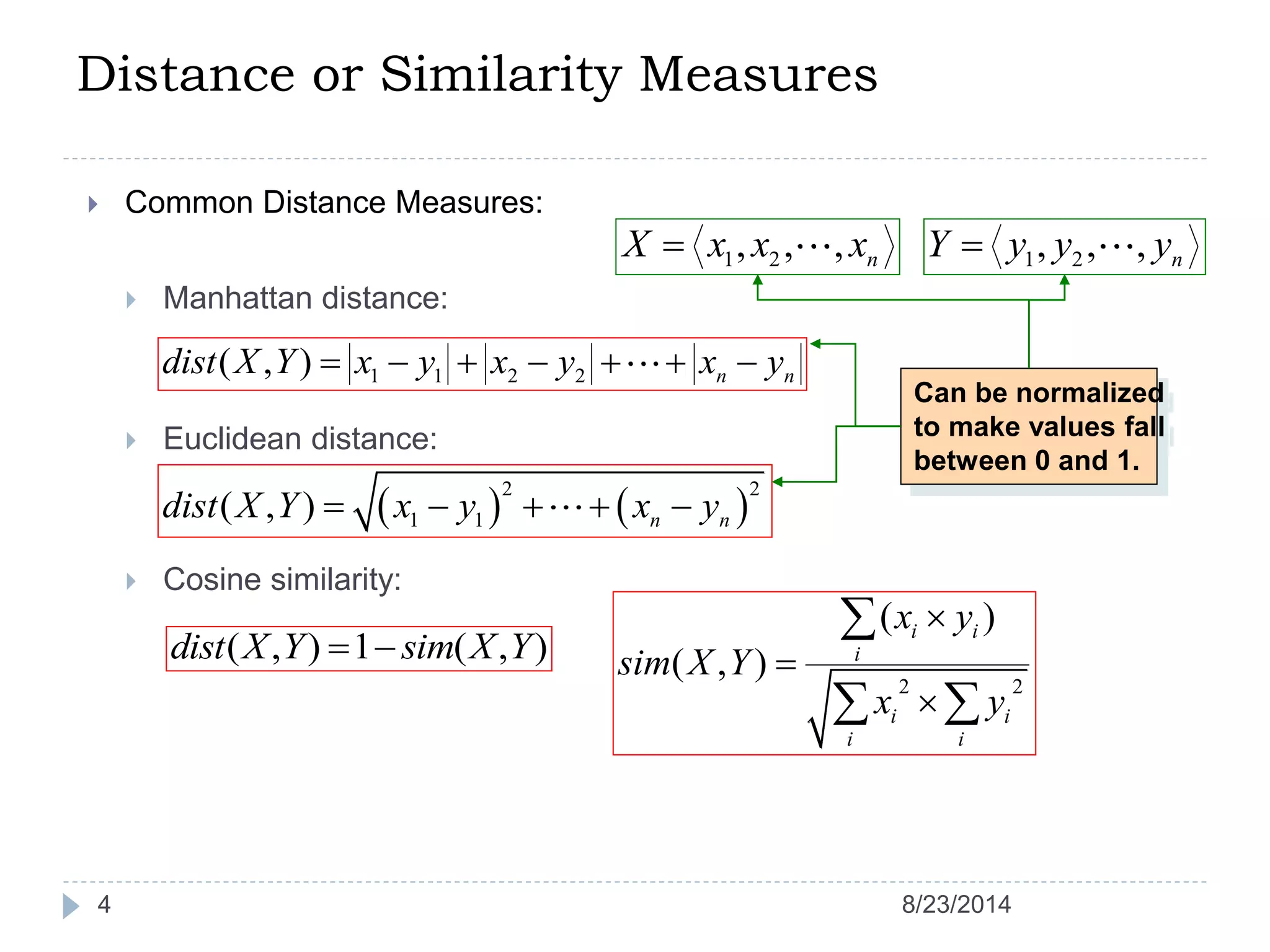
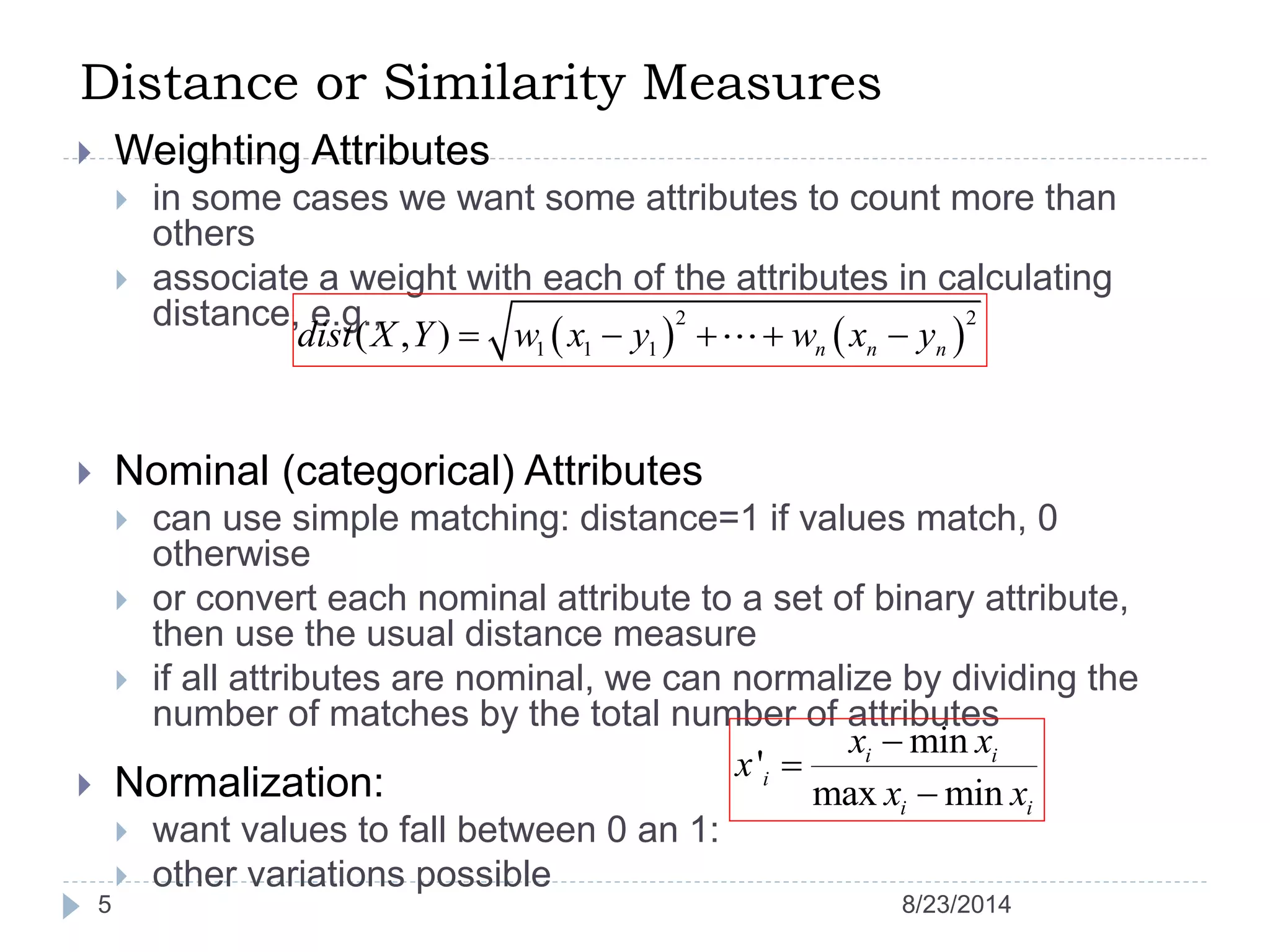
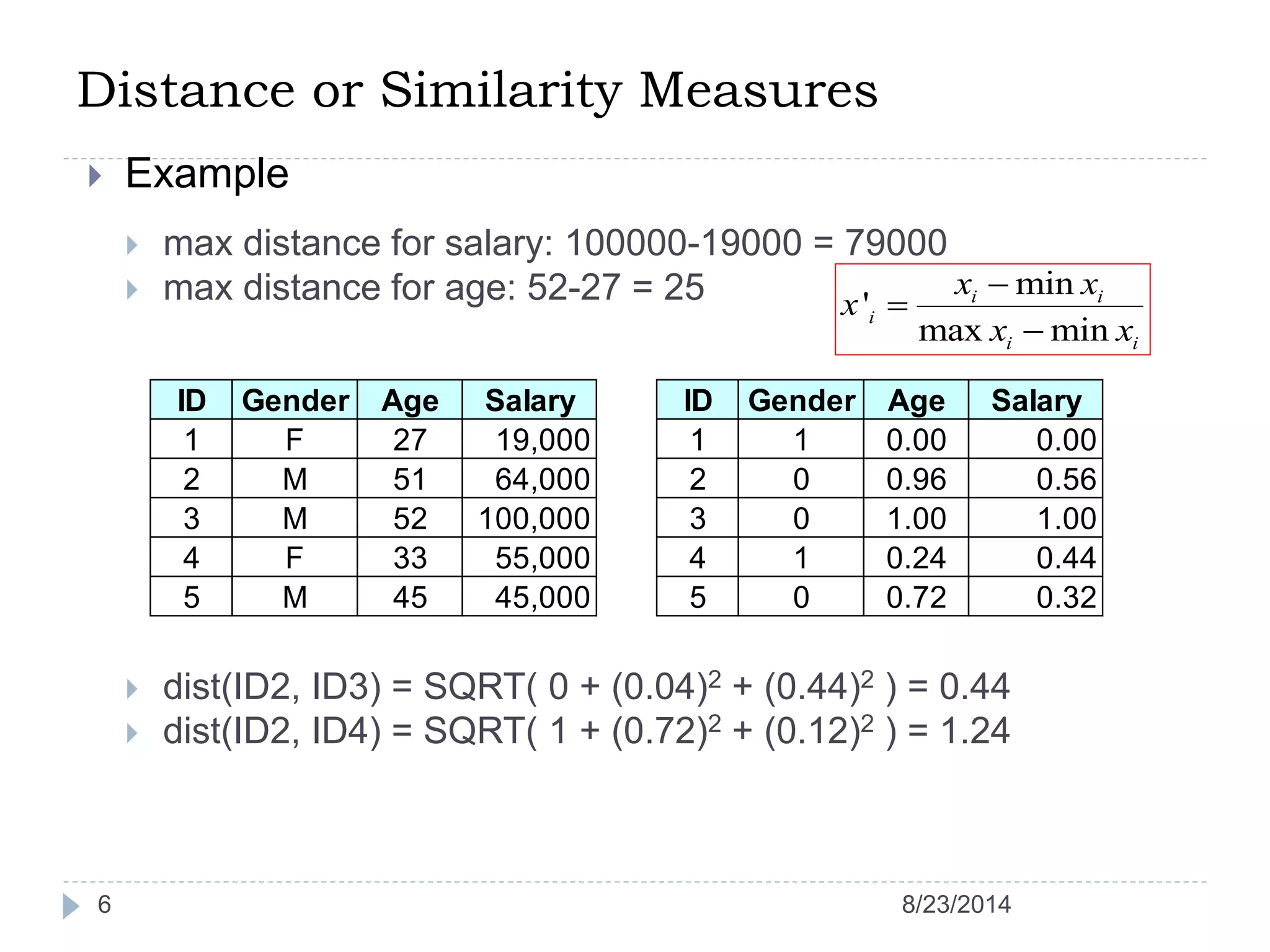


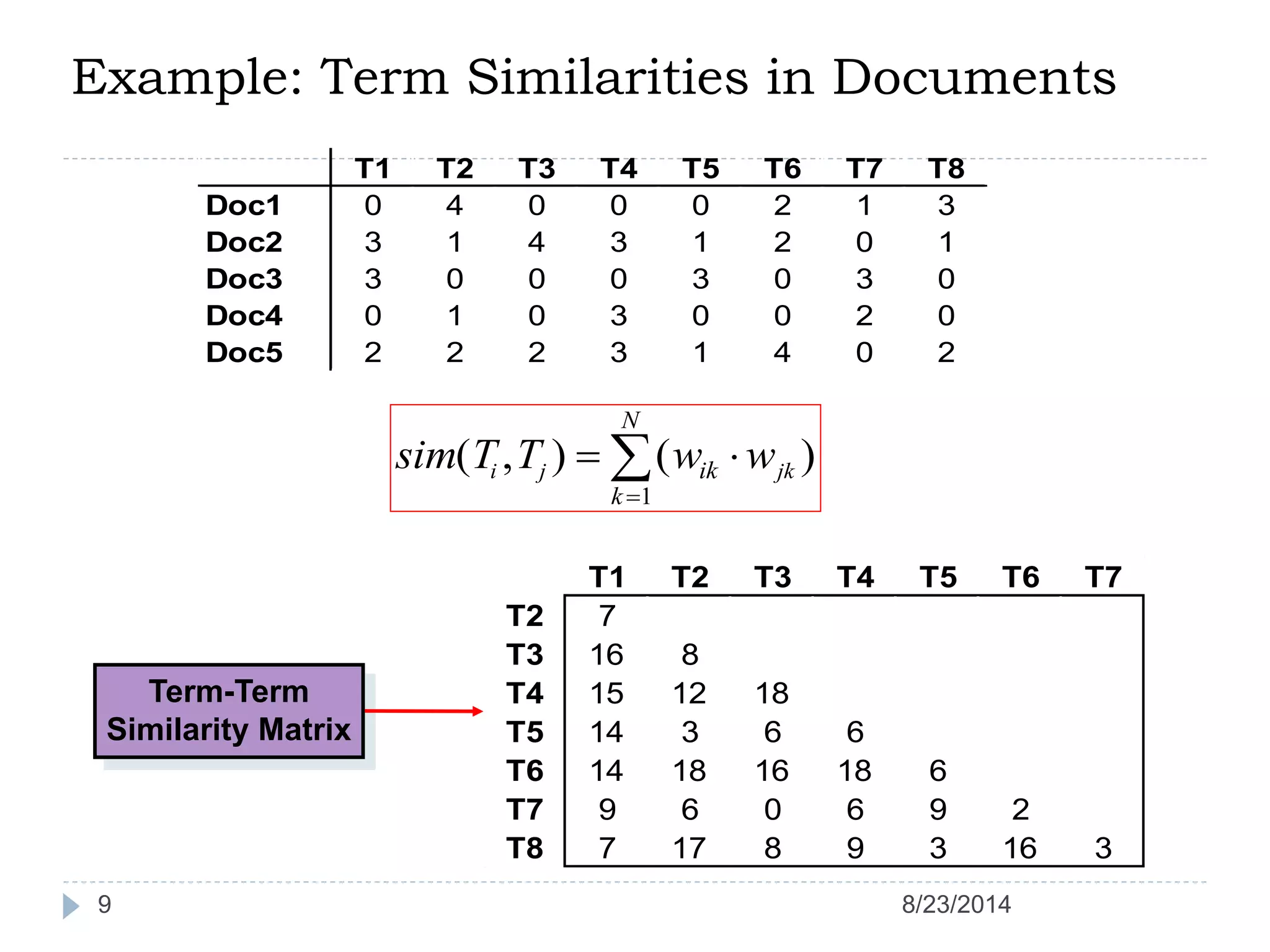
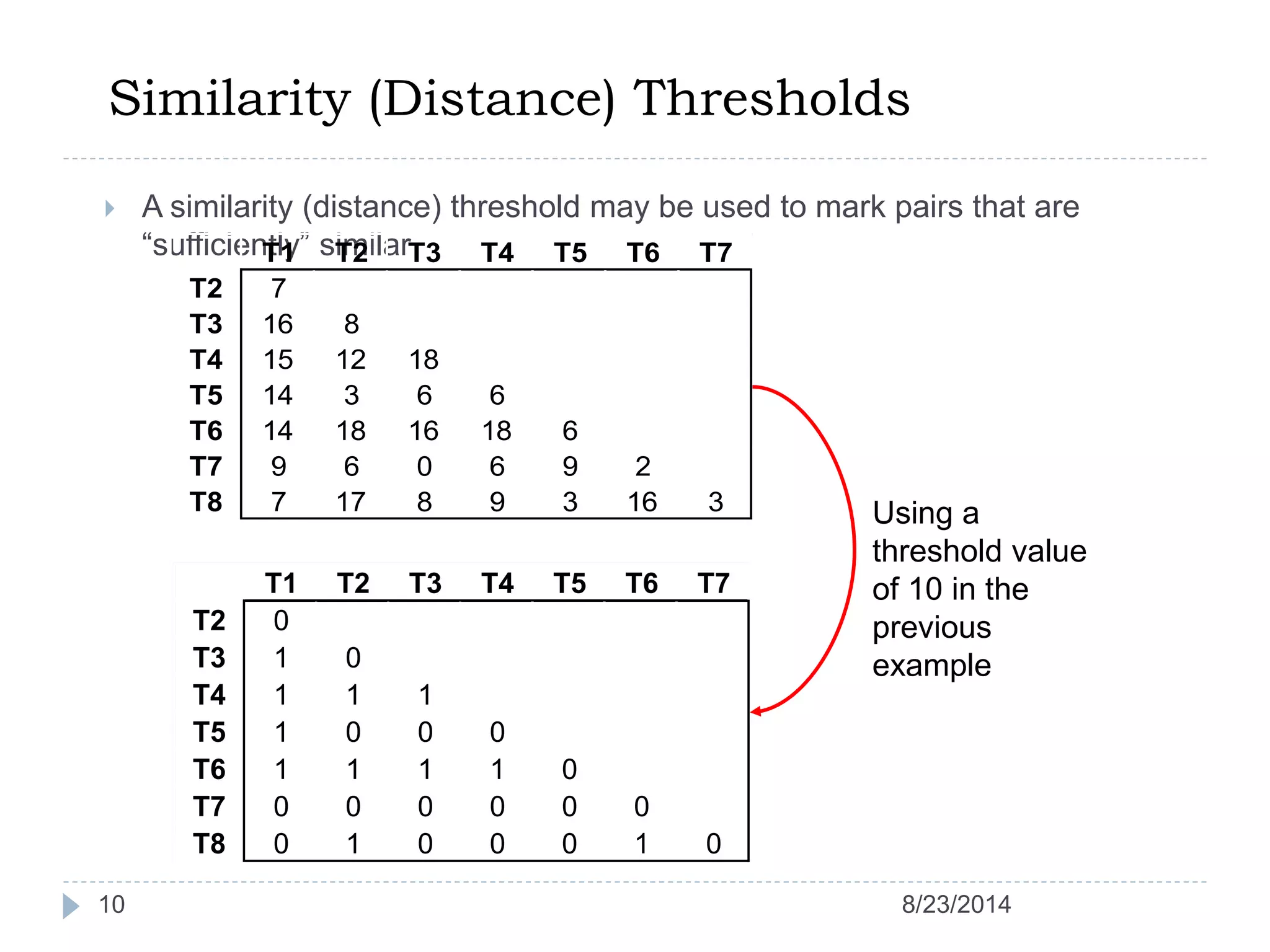
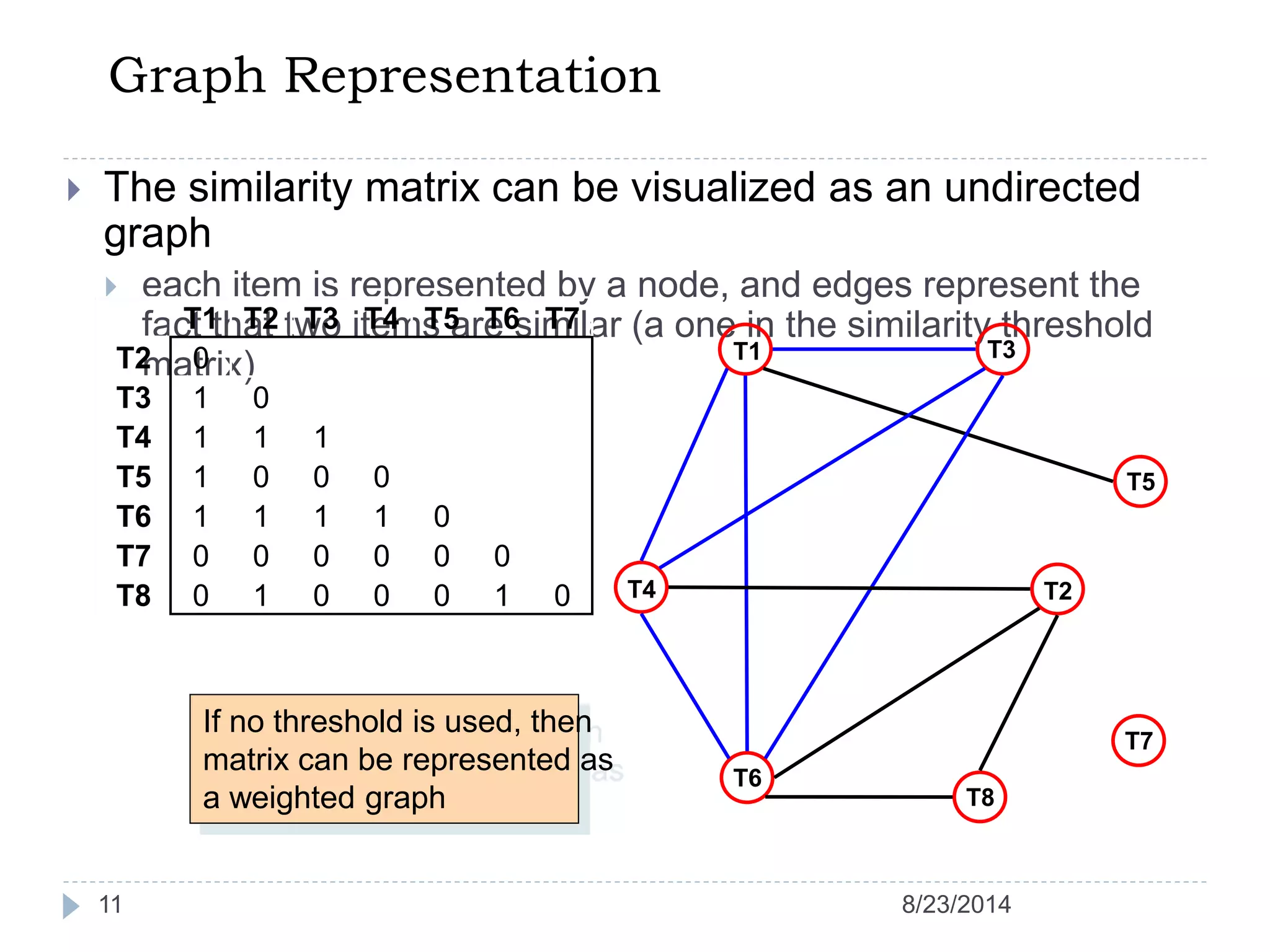
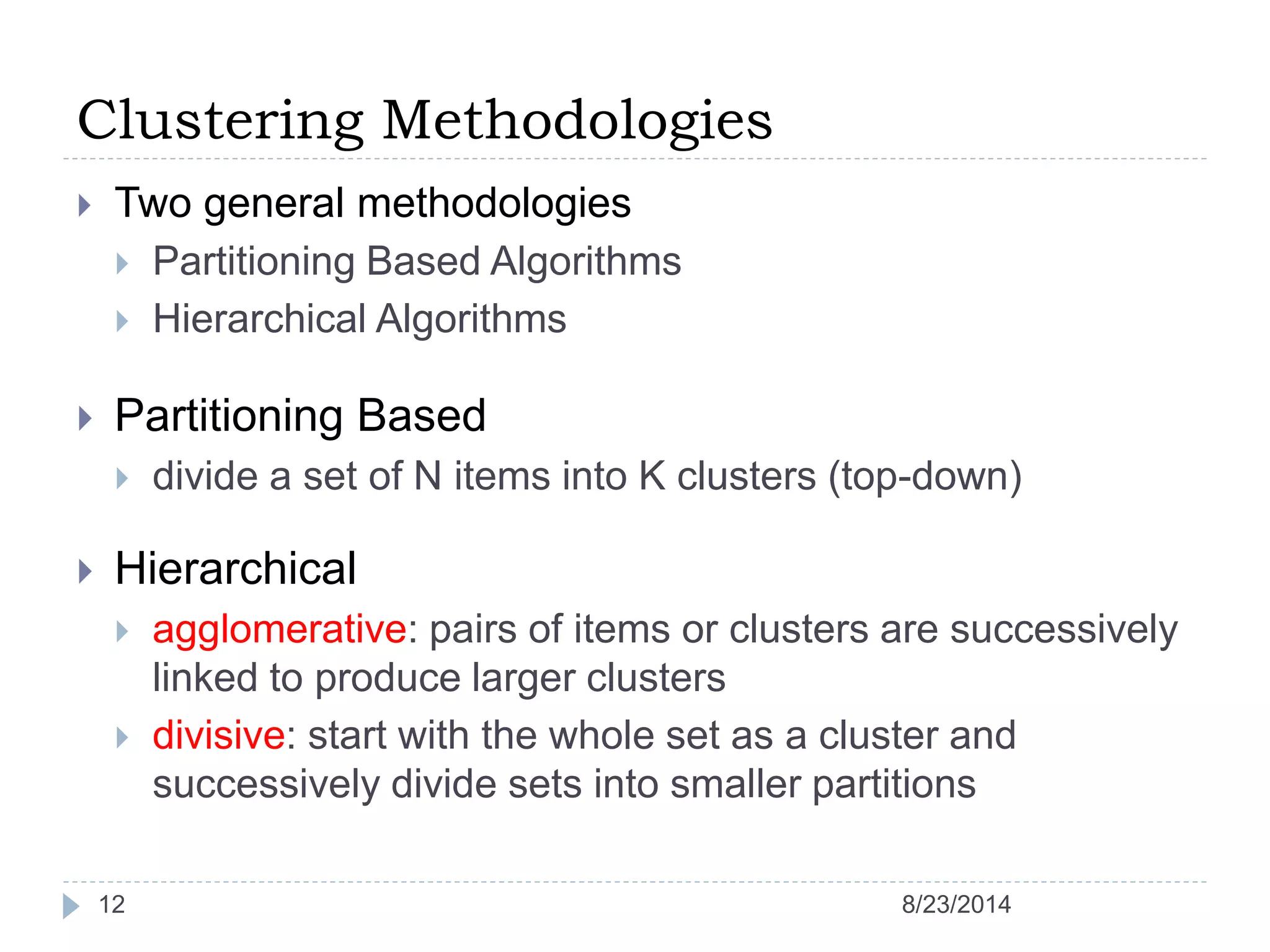
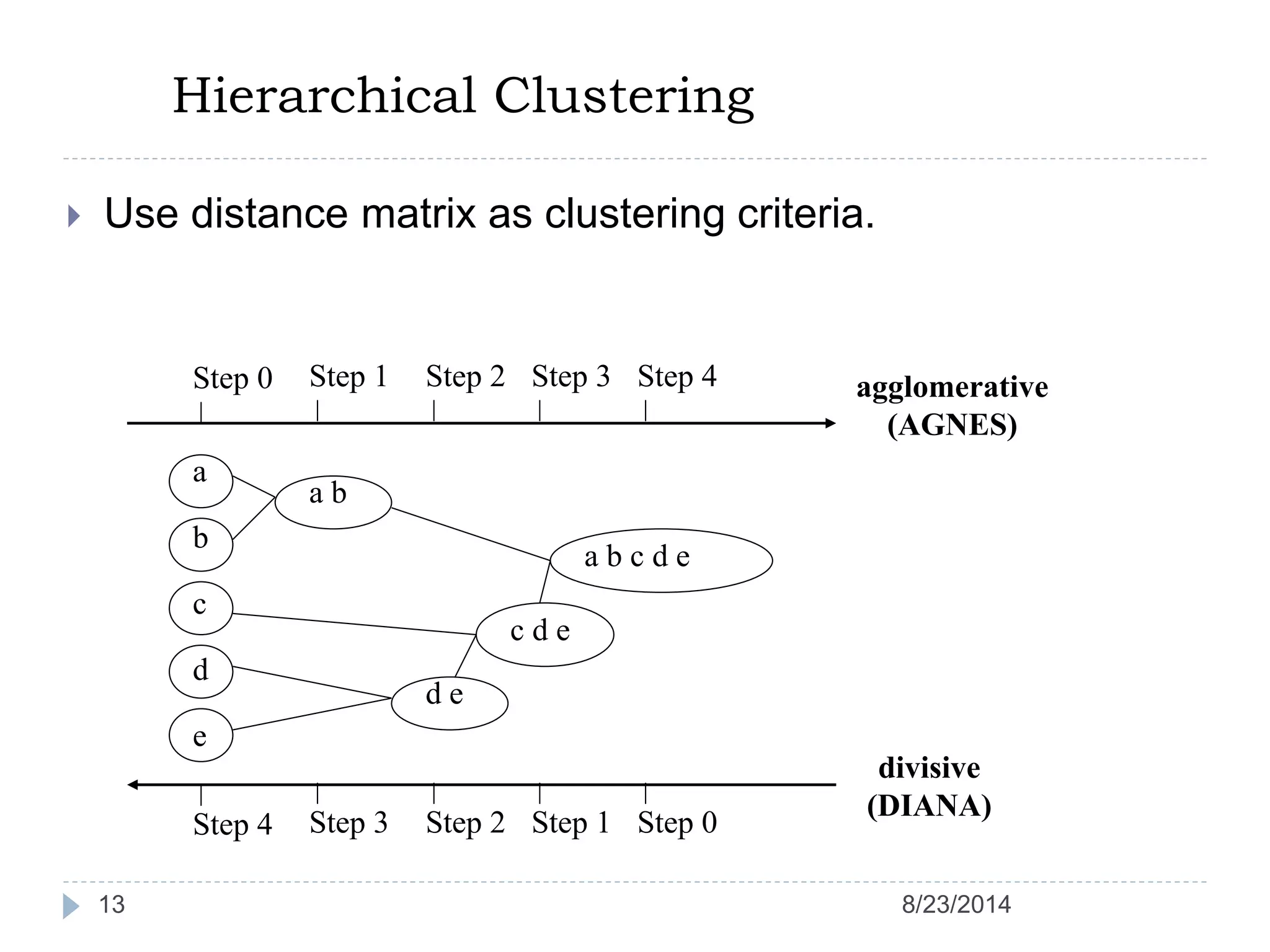
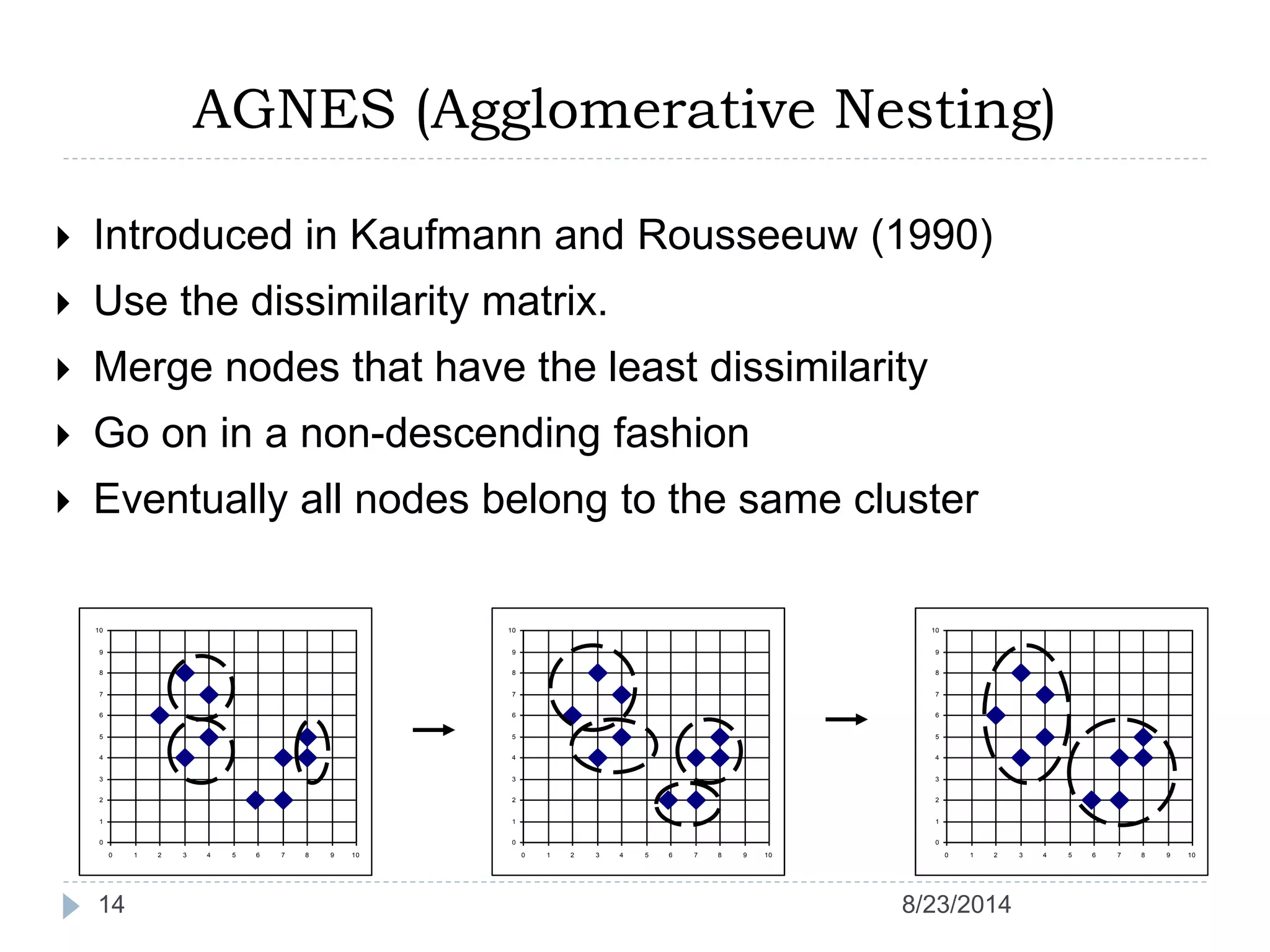
![Algorithmic steps for Agglomerative
Hierarchical clustering
Let X = {x1, x2, x3, ..., xn} be the set of data points.
(1)Begin with the disjoint clustering having level L(0) = 0 and sequence number m =
0.
(2)Find the least distance pair of clusters in the current clustering, say pair (r), (s),
according
to d[(r),(s)] = min d[(i),(j)] where the minimum is over all pairs of clusters in
the current clustering.
(3)Increment the sequence number: m = m +1.Merge clusters (r) and (s) into a
single cluster to form the next clustering m. Set the level of this clustering to
L(m) = d[(r),(s)].
(4)Update the distance matrix, D, by deleting the rows and columns corresponding
to clusters (r) and (s) and adding a row and column corresponding to the
newly formed cluster. The distance between the new cluster, denoted (r,s) and
old cluster(k) is defined in this way: d[(k), (r,s)] = min (d[(k),(r)], d[(k),(s)]).
(5)If all the data points are in one cluster then stop, else repeat from step 2).8/23/201415](https://image.slidesharecdn.com/hierarchicalclustering-140823031334-phpapp01/75/Hierarchical-clustering-15-2048.jpg)
